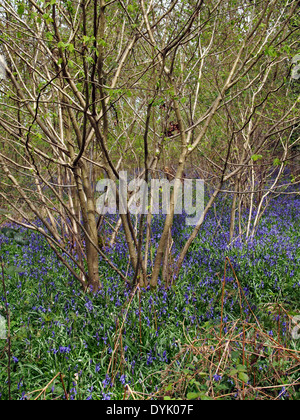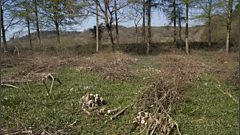

#Hazel coppice free
Keep trees or shrubs that are planted in grass free of competition for the first three years and you will double the rate of growth. Who knows if my foraging will run to such luxuries in years to come, but here's to trying. In time, when the canopies touch and the pasture underneath is shaded I will introduce bluebells and snowdrops, campion, primrose and, by the gate, to either side as markers, two trees inoculated with the spores of black truffle (). They will be planted on a loosely structured grid of about 6m so that it is easy to move between them. "Kentish Cob" from the 1830s, "Pearson's Prolific", a good compact variety (and hard to resist a namesake), and "White Filbert", with its milky kernel, to name just three. If I were to plant hazel in a more urban setting I would find the spot to the north or east of buildings, or in the shade of a tree where other plants might not do so well.Īs I have the room, I have ordered four-dozen trees of seven varieties. The chosen site for the nuttery is to the bottom of the slope below the orchard, where the ground lies moist and the fingers of shade from the poplars keep the air cool. Try planting them out in the open and they will sulk for a good three to five years before gathering the strength to bulk up and out, but plant a hazel in a cool, sheltered position akin to their native habitat and they will flourish. With the exception of the hazel in the hedgelines, which must have arrived there by squirrels burying and then forgetting their bounty, the hazel favour the woodland. It took my first year here to decide upon the position for the nuttery. If the squirrels get to the nuts first, at least we will have hazel rods and twigs for staking, but we're on a learning curve of getting to know our land and I remain optimistic. Undaunted, and perhaps in the mistaken belief that there are enough to share if I can get the numbers up, I have ordered a collection of cobnuts and filberts. I imagined the squirrels giving them a shake or sizing them up for weight, as we might a melon, before deciding to save their energy on breaking open those that bore the kernel. The nuts on the ground were empty and there were none on the trees by the time we got there. We missed the hazelnuts on the trees down by the stream by a long shot. It was found in 1872, built into the external wall of the chancel.ĭownhill from the church, past the community tennis court and war memorial cemetery, jays screech across a soggy path into the gloomy woods that hide the bailey and reduced motte of Cardinham Castle, constructed by the Fitz Turolds, owners of 28 manors at the time of Domesday.īack in Cardinham village, around old tombstones in the graveyard, and in the gardens and hedges, drifts of snowdrops gleam in the fading light – substitutes for this winter’s absence of real snow.Corylus maxima 'Gunslebert'. In Cardinham, to the south-west, 400 feet below this fortified lookout, the pinnacled tower of St Meubred’s church is set among hazy sunbeams that seem to draw water from the surrounding fields, and steep wooded valleys running towards the River Fowey.Īcross the parish there are medieval granite crosses, including Treslea, which marks the boundary of glebe land (owned by the church), and an early memorial cross, finely sculpted and dating from the ninth or 10th century.

Braced against the gusts, we peer north towards the distinctive high tors of Brown Willy and Rough Tor, and eastward towards the grey outlines of Caradon Hill and Sharp Tor, which rise above home in the Tamar Valley. Today, this ancient turfy enclosure is buffeted by a north-west wind.

In wet areas alder and willows were used. Ahead, silhouetted against streaks of bright sky, are the rampart and external ditch of the iron age hill fort (400BC-AD50) set on a ridge extending out from the moor. In southern Britain, coppice was traditionally hazel, hornbeam, field maple, ash, sweet chestnut, occasionally sallow, elm, small-leafed lime and rarely oak or beech, grown among pedunculate or sessile oak, ash or beech standards.


 0 kommentar(er)
0 kommentar(er)
